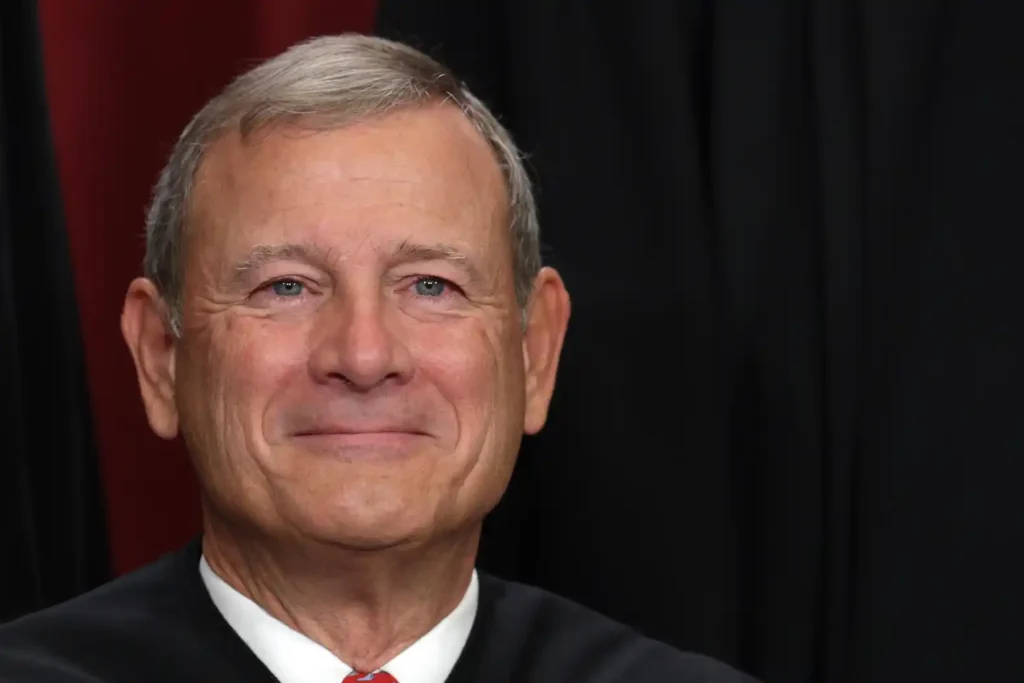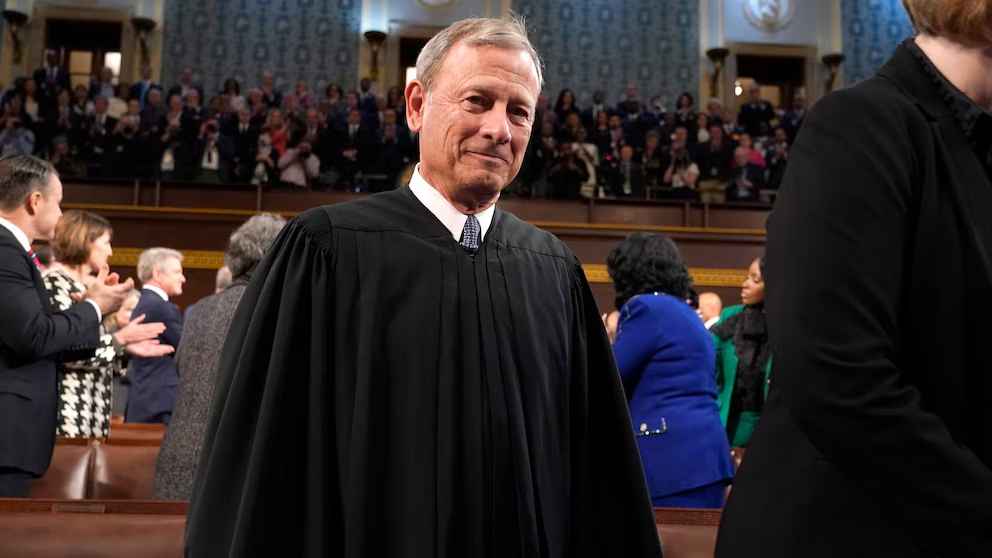Chief Justice John G. Roberts, Jr. has been a pivotal figure in the United States judiciary, shaping the interpretation of the Constitution and influencing significant legal precedents. His journey from a young scholar to the helm of the Supreme Court is both compelling and instructive.
Who is John Roberts?
John Glover Roberts, Jr. was born on January 27, 1955, in Buffalo, New York. He spent his early years in Indiana, where he showcased leadership qualities early on by captaining his high school football team. Demonstrating academic excellence, Roberts graduated summa cum laude from Harvard College in 1976 after just three years and subsequently earned his Juris Doctor from Harvard Law School in 1979.
Following his academic achievements, Roberts clerked for Judge Henry J. Friendly of the U.S. Court of Appeals for the Second Circuit and later for then-Associate Justice William H. Rehnquist of the U.S. Supreme Court during the 1980 term. His career trajectory included roles in the U.S. Department of Justice and the Office of the White House Counsel, before entering private practice. In 2003, he was appointed to the U.S. Court of Appeals for the District of Columbia Circuit. Just two years later, in 2005, President George W. Bush nominated him as Chief Justice of the United States, a position he continues to hold.
Early Life and Education
Roberts was born to parents Rosemary (née Podrasky) and John Glover “Jack” Roberts Sr., both devout Catholics. His father had Irish and Welsh ancestry, while his mother was descended from Slovak immigrants from Szepes, Hungary. He has an elder sister, Kathy, and two younger sisters, Margaret and Barbara. The family initially resided in Hamburg, New York, where his father worked as an electrical engineer for the Bethlehem Steel Corporation’s factory in Lackawanna. In 1965, when Roberts was ten, the family relocated to Long Beach, Indiana, following his father’s appointment as manager of a new steel plant in nearby Burns Harbor.
From a young age, Roberts exhibited a clear vision for his future. At 13, he sent a letter to La Lumiere School, an elite Catholic boarding school in La Porte, Indiana, expressing his desire for admission. He wrote, “I’ve always wanted to stay ahead of the crowd. I won’t be content to get a good job by getting a good education; I want to get the best job by getting the best education.”
At La Lumiere, Roberts thrived both academically and extracurricularly. He captained the football team, participated in track and field, and emerged as a regional wrestling champion. His involvement extended to choir, drama, and co-editing the school newspaper. In his junior year, he showcased his versatility by playing Peppermint Patty in the play “You’re A Good Man, Charlie Brown.” Roberts graduated in 1973 as class valedictorian, becoming the first graduate of La Lumiere to enroll at Harvard University.
At Harvard College, Roberts dedicated himself to studying history, his academic major. He had entered Harvard as a sophomore with second-year standing based on his academic achievements in high school. Roberts first roomed in Straus Hall before moving to Leverett House. Every summer, he returned home to work at the steel plant his father managed. Although he initially felt obscured among other students, Roberts distinguished himself with professors, meriting multiple distinctions for his scholarly writing. He gained a reputation as a serious student who valued formalism. Every Sunday, he attended Catholic Mass at St. Paul Church.
As an undergraduate, Roberts excelled academically. He focused on modern European history and maintained an interest in politics. In his first year, he won the university’s Edwards Whitaker Scholarship for outstanding scholastic achievement. He intended to pursue a Ph.D. in history to be a professor but also contemplated a legal career. One of Roberts’s first papers, “Marxism and Bolshevism: Theory and Practice,” won Harvard’s William Scott Ferguson Prize for the most outstanding essay by a sophomore history major. An early interest in oral advocacy also led him to study Daniel Webster, a prominent advocate before the Supreme Court. His senior year paper, “The Utopian Conservative: A Study of Continuity and Change in the Thought of Daniel Webster,” won a Bowdoin Prize.
In 1976, Roberts obtained his Bachelor of Arts degree in history, summa cum laude, with membership in Phi Beta Kappa. A recent surplus of history graduate students convinced him to attend Harvard Law School for better career prospects, though he maintained his original goal to become a professor. His first-year performance in law school placed him in the top 15 students in a class of 550 and won him membership on the Harvard Law Review. The journal’s president, David Leebron, chose Roberts as its managing editor, despite their differing political views. Classmate David Wilkins described Roberts as “more conservative than the typical Harvard Law student in the 1970s” but well-liked by fellow students. In 1979, Roberts graduated at the top of his class with a Juris Doctor, magna cum laude, despite once having to admit himself to a local hospital for exhaustion. He later regretted that he traveled into Boston on only a couple of occasions during his time at Harvard, being too preoccupied with his studies.
Personal Life and Family
In 1996, Roberts married Jane Sullivan, a fellow lawyer who gained prominence as a legal recruiter at firms like Major, Lindsey & Africa, and Mlegal. She serves on the board of trustees at her alma mater, the College of the Holy Cross, alongside Justice Clarence Thomas. The couple has two adopted children: John “Jack” and Josephine “Josie.”
Roberts is one of only 15 Catholic justices in the Supreme Court’s 115-year history. As of 2022, six of these justices are serving concurrently: Roberts, Clarence Thomas, Samuel Alito, Sonia Sotomayor, Brett Kavanaugh, and Amy Coney Barrett.

Health-wise, Roberts has experienced a few notable incidents. In 2007, he suffered a seizure at his vacation home in St. George, Maine, leading to hospitalization. A similar episode occurred in 1993, but subsequent evaluations found no cause for concern. More recently, in June 2020, Roberts sustained a fall at a Maryland country club, requiring sutures on his forehead and an overnight hospital stay. Doctors attributed
Detailed Bio Table
| Attribute | Details |
|---|---|
| Full Name | John Glover Roberts, Jr. |
| Date of Birth | January 27, 1955 |
| Place of Birth | Buffalo, New York |
| Education | – A.B., Harvard College (1976, summa cum laude) – J.D., Harvard Law School (1979) |
| Clerkships | – Judge Henry J. Friendly, U.S. Court of Appeals for the Second Circuit – Associate Justice William H. Rehnquist, U.S. Supreme Court |
| Professional Roles | – Associate Counsel to President Ronald Reagan – Principal Deputy Solicitor General – Judge, U.S. Court of Appeals for the D.C. Circuit |
| Current Position | Chief Justice of the United States (since 2005) |
| Spouse | Jane Sullivan Roberts (married in 1996) |
| Children | Two – Josephine and Jack |
ohn Roberts’ Career Timeline
| Year | Position | Organization | Key Achievements |
|---|---|---|---|
| 1980 | Law Clerk | U.S. Court of Appeals | Clerked for Judge Henry Friendly |
| 1981-1982 | Law Clerk | U.S. Supreme Court | Clerked for Chief Justice William Rehnquist |
| 1982-1986 | Special Assistant | U.S. Attorney General | Worked under the Reagan administration |
| 1989-1993 | Principal Deputy Solicitor General | U.S. Department of Justice | Argued cases before the Supreme Court |
| 2003-2005 | Judge | U.S. Court of Appeals (D.C. Circuit) | Appointed by President George W. Bush |
| 2005-Present | Chief Justice | U.S. Supreme Court | Nominated by President Bush, shaping key rulings |
Latest News
As of March 18, 2025, Chief Justice John Roberts publicly addressed President Donald Trump’s call for the impeachment of federal judges who have ruled against the administration’s policies. Roberts emphasized that impeachment is not an appropriate response to judicial decisions and underscored the importance of the appellate review process in addressing disagreements with court rulings. This statement came after President Trump criticized U.S. District Judge James Boasberg for blocking deportation flights of alleged Venezuelan gang members, labeling Boasberg a “Radical Left Lunatic” and suggesting his impeachment. Roberts’ intervention highlights the judiciary’s commitment to maintaining its independence and the proper channels for challenging judicial decisions.
Social Media Accounts Table
| Platform | Official Link |
|---|---|
| Not Applicable | Chief Justice John Roberts does not maintain public social media accounts. |
Height and Physical Appearance
Specific details regarding Chief Justice Roberts’ height and physical appearance are not widely publicized, as he maintains a private personal life, focusing public attention on his judicial work and contributions to the legal field.
Net Worth as of 2025
Chief Justice John Roberts’ net worth is not publicly disclosed. As a public servant, his earnings are derived from his role in the judiciary, and he does not engage in activities that typically amass significant personal wealth. His financial status reflects his dedication to public service rather than personal financial gain.
Chief Justice John Roberts’ tenure continues to influence the direction of U.S. jurisprudence, balancing the interpretation of the Constitution with contemporary societal needs. His recent actions reaffirm the judiciary’s role as an independent arbiter in the nation’s governance.
FAQs
-
Who picked John Roberts for the Supreme Court?
- President George W. Bush nominated John Roberts for the U.S. Supreme Court in 2005.
-
Who is John Roberts’ wife?
- His wife is Jane Sullivan Roberts, a lawyer and legal recruiter.
-
What religion is John Roberts?
- John Roberts is Roman Catholic.
-
Why did John Roberts leave CNN?
- John Roberts the journalist left CNN in 2011 to join Fox News, seeking new opportunities in political reporting. (Note: This is a different John Roberts from the Chief Justice.)
- John Roberts the journalist left CNN in 2011 to join Fox News, seeking new opportunities in political reporting. (Note: This is a different John Roberts from the Chief Justice.)



